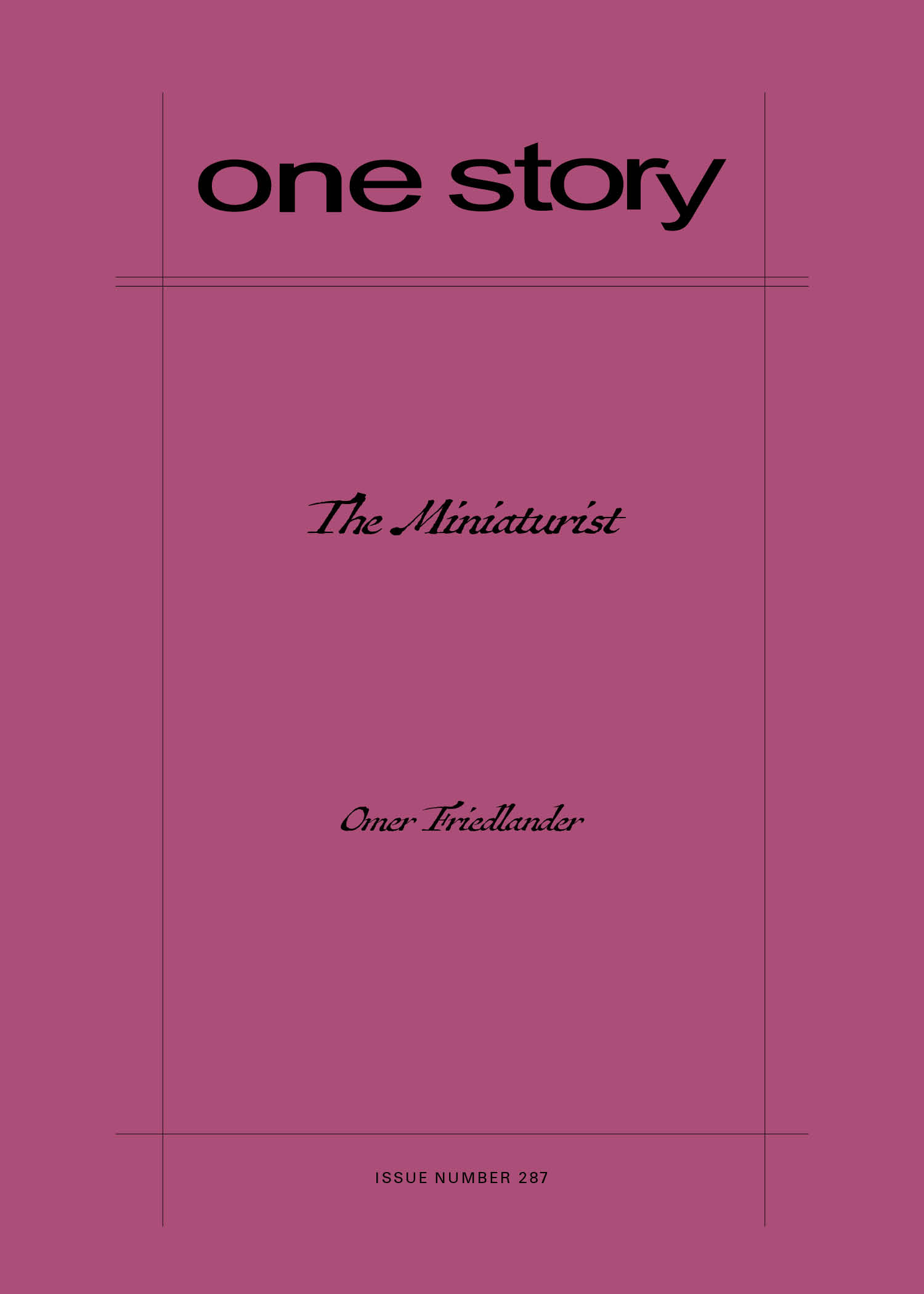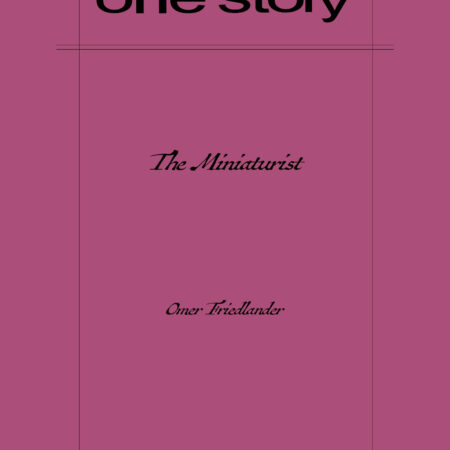
The Miniaturist
$2.50
146 in stock
Excerpt
I arrived at the Ma’abara refugee absorption camp set up in the newly established State of Israel in the winter of 1950, in the midst of the greatest snowstorm of the century. Together with my parents and four older brothers, I trudged through the thick, powdery snow, an endless flurry of white flakes, watching figures emerge from the pale mist, silhouettes misshapen by everything they carried, all their lifelong possessions rolled up in rags, bundled in wool and fur, tied together with strips of string, stuffed into worn leather valises. We were all wanderers, ghostly apparitions plucked out of thin air like black sunflowers, searching for a place to lay down roots.
My family came only with the clothes on our backs and a laissez-passer, a one-way travel document. Six of the seven suitcases we’d shipped got lost on the way. We were checked for lice, our bodies sprayed with insecticide to prevent the spread of malaria and typhus. Our congested tent city, housing thousands of immigrants, stretched across the coastal plain from Mount Carmel to the east all the way to the sea in the west. We lived about one kilometer away from the water, but we could never visit the beach. A barbed-wire fence encircled the tent city, and we couldn’t cross its perimeter without permission from the authorities. We were confined to a small patch of land and left to fend for ourselves.
Omer Friedlander
Omer Friedlander was born in Jerusalem in 1994 and grew up in Tel Aviv. He earned a BA in English literature from the University of Cambridge, England, and an MFA from Boston University, where he was supported by the Saul Bellow Fellowship. His short stories have won numerous awards and have been published in the United States, Canada, France, and Israel. A Starworks Fellow in Fiction at New York University, he has earned a Bread Loaf Work-Study Scholarship as well as a fellowship from the Vermont Studio Center. He currently lives in New York City. Learn more at www.omerfriedlander.com.
Patrick Ryan on “The Miniaturist”
I have a soft spot for stories about unlikely friendships, because they almost always, in their way, end up being love stories. One way to read our new issue, Omer Friedlander’s “The Miniaturist,” is as a love story.
Esther and Adinah are two young girls who meet in 1950, in the newly formed State of Israel, when their families are forced to move into the Ma’abara immigration absorption camp. Living, suddenly, in a community of tents, among thousands of relocated individuals, the girls discover they both share a passion: drawing. Adinah’s ancestors were Jewish text illustrators—known as “miniaturists”—from Catalonia who were expelled in 1492 for not converting. Esther’s ancestors were miniaturists, as well, but conversos, and as she begins to demonstrate her own artistic talent, there are those in Ma’abara who believe she’s the reincarnation of the most famous miniaturist of all—Nissim ben-Tzemach Albarjeloni.
When the girls become obsessed with well-known photographer Shmuel Sassoon, another resident of the camp, and he, in turn, takes an interest in Esther’s talent and her potential status as the reincarnated master illustrator, a rivalry is seeded that will affect Adinah’s behavior and cause her to carry Esther with her for the rest of her life.
In “The Miniaturist,” Omer Friedlander has created a beautiful and conflicted portrait of a friendship that cannot last, and yet lasts. It’s a story of dispossession and disembodiment, and it’s a story of love. We’re delighted to present it to you.
Q&A by Patrick Ryan
- PR: Where did the idea for this story come from?
- OF: I got the initial idea for the story when I met two Jewish-Iranian brothers at a small shop on Ben-Yehuda Street in Tel Aviv. They sold carpets made by their elderly mother, and also beautiful vases, painted with fish and flowers. I began talking to the brothers, and they told me about some of their experiences immigrating to Israel from Isfahan, a city in Iran known for its textiles and carpets. The second, more personal source of inspiration for the story was my maternal grandmother, who came to Israel from Alexandria, Egypt, in 1950. My grandmother’s ancestors are from Syria and Morocco, and can be traced all the way back to the golden age of Jews in Spain, before the Alhambra Decree of Isabella and Ferdinand forced them into exile. When my grandmother came to Israel with her family, at the age of sixteen, she was sent to a Ma’abara immigration absorption camp (like the protagonist of my story), with the most terrible living conditions: sleeping in tents, with limited running water, and sewage flowing openly. She spent almost a year in the tent-city and still finds it incredibly difficult to talk about that time.
- PR: How long did it take you to complete this story?
- OF: This story was written pretty quickly. I’d say two or three months until I had a solid draft ready to show other people. First, I showed it to my parents (they’re my first readers), then my agent and my editor. The story began with an intimate rivalry between two close friends, and slowly those central feelings of jealousy and competition found other echoes and resonances, like the story of Cain and Abel. I kept finding more and more connections. That’s when I begin to feel like I actually have a story, everything sort of fits together.
- PR: The story is set in a refugee absorption camp in Israel in 1950. What did viewing that world through the eyes of a child provide you that viewing it strictly through an adult’s eyes wouldn’t have?
- OF: I think writing from the point-of-view of a child gives you a lot of possibilities as an author. Everything is a surprise to a child, the world is always in a state of discovery. I wanted to have that sense of wonder and playfulness set in a landscape (the refugee camp), which is very inhospitable, particularly for children. In many ways, the narrator sees her friend Esther as a kind of grownup in the body of a child, a genius, possibly the reincarnation of the Miniaturist, a famous medieval illuminator of holy texts, so for her the boundaries between childhood and adulthood are a bit blurry. The story is about the friendship between these two children in the refugee camp, and how it affects the narrator’s entire life, so there’s a lot of weight placed on childhood experience. I wanted to interweave the personal story of a young girl arriving in a new country with a larger political history, exploring the way Jewish immigrants and refugees from the Middle East and North Africa were treated by the sabras and the Ashkenazi elite of the kibbutzim, because this is a subject that isn’t often openly and honestly discussed. And from a different perspective, as a writer I think it’s important to remain child-like, curious, to never take things for granted, to constantly ask the question: “what if?” That’s my writing process, to keep asking what if this, then what if that, and so on and so on. The serious world of adults is full of certainty, and very clear-cut answers, but sometimes that’s the enemy of fiction, which is a world of ambiguity and questions and playfulness.
- PR: How different is “The Miniaturist” from the story you set out to write? Another way I sometimes I ask this is, What surprised you the most in writing the story?
- OF: I was most surprised by how personal and intimate the story felt to me, even though on the surface I’d written about an experience and time quite far removed from my own. The decision to focus on a visual artist (the Miniaturist) was in a strange way autobiographical. I was always a reader, but before I started writing more seriously, I really liked drawing. As a kid, I spent hours sketching imaginary places and creatures: castles and knights, dragons and sea-serpents. When I got older, I began drawing still-life: a bruised, pockmarked pomegranate, light reflecting in a crystal glass, a shriveled sunflower. Sometimes I drew architecture: the view from my window in Tel Aviv, of cranes or water-boilers on rooftops. I liked copying over and over again Piranesi’s wild, nightmarish heaps of ruins, or Caravaggio’s dramatic Biblical scenes, like David holding up Goliath’s head by the hair. I think this kind of attention to detail, a way of seeing the world, taught me so much about writing.
- PR: Can you tell us a little about your upcoming collection of short stories—what it’s called, and what it’s about?
- OF: The collection is called The Man Who Sold Air in the Holy Land, and it’s coming out with Random House on April 12th, 2022. The stories in the collection focus on the intimate lives of characters in Israel and the Middle East. They explore the possibility, difficulty, and hope for relationships across divides and boundaries, political and physical borders, between generations and collective national identities. But the stories mostly do not aim to directly portray the violence, physical and mental, that constitutes their background landscapes. Rather, they explore private moments of fragile intimacy that are formed through humor, naivety, cunning, absurdity, and an eye for the grotesque and fantastic in the midst of what for others are sharply drawn lines of conflict and separation. The Israeli author and peace activist David Grossman sometimes compares Israel to a suit of armor, a place which knows only cycles of violence and bloodshed, but literature, he says, is where we can redeem each character in our story from alienation and impersonality. In our stories, we can find the human being inside the suit of armor.
- PR: What are you working on now?
- OF: I’m currently working on a novel, The Glass Golem. I’ve been very lucky to have had the opportunity to work on this project with some of my favorite writers, during my MFA at NYU: Katie Kitamura, Jonathan Safran Foer, and Zadie Smith. But I actually don’t love talking about works-in-progress...As Amos Oz used to say when asked what he’s working on right now: “I never talk about it—one mustn’t expose pregnancy to X-rays, it can damage the baby.”
- PR: What is the best bit of advice about writing you have ever received?
- OF: My former teacher Ha Jin once told me: “Start at the heart of the story.” I always thought that was very wise and true. Other than that, I’d say read as much as you can, and write every day if you can. And maybe don’t listen when someone gives you writing advice, because you end up figuring it out your own way anyway and teaching yourself what really matters.
